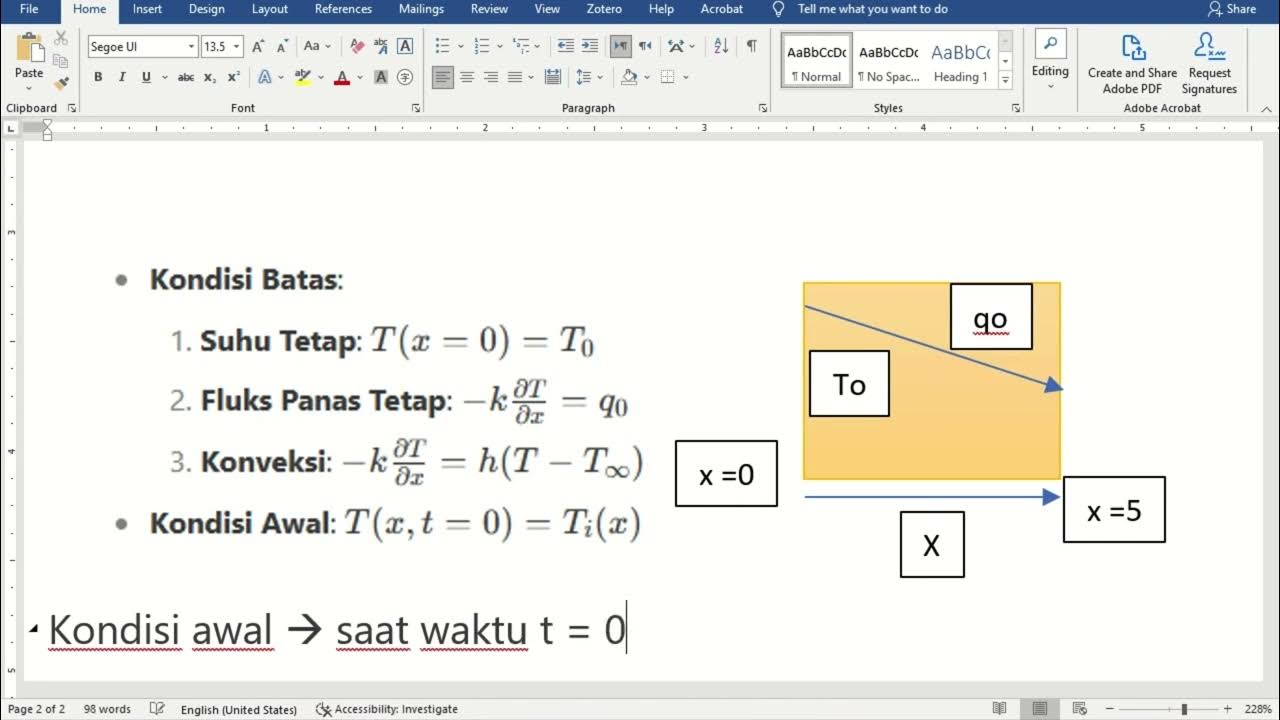Flow of Heat - Conduction
Summary
TLDRThis video explains the flow of heat through conduction, focusing on how heat transfers between atoms and molecules in matter. Heat moves from higher to lower temperatures by the migration of atoms. Materials with free electrons, like metals (copper, iron, aluminum), are good conductors, while materials like plastic and glass are bad conductors or insulators. The video uses activities like heating a metal pan with a plastic handle to illustrate how heat flows through conductors and why insulators remain cold. The key takeaway is that the efficiency of heat conduction depends on the material’s ability to transfer energy via atomic vibrations.
Takeaways
- 😀 Heat is produced due to the vibrations of atoms in matter.
- 😀 Conduction is the transfer of heat through direct contact of particles in matter.
- 😀 Heat always transfers from a higher temperature to a lower temperature by migration of atoms or molecules.
- 😀 A good conductor of heat allows heat to flow through it due to the presence of free electrons.
- 😀 Metals like copper, iron, and aluminum are good conductors of heat.
- 😀 Bad conductors of heat, also known as insulators, do not allow heat to transfer effectively.
- 😀 Insulators like plastic and glass do not allow heat to flow through them due to the arrangement of their atoms.
- 😀 An example of conduction: When heating one end of a metal wire, the heat travels through the wire due to atomic vibrations.
- 😀 In a practical example, a saucepan with a metal body but a plastic handle transfers heat to the pan but not to the handle, keeping it cool.
- 😀 Heat conduction depends on the material, with metals being good conductors and materials like plastic being poor conductors.
Q & A
What is conduction?
-Conduction is the heat transfer by direct contact of particles of matter, where heat moves from higher to lower temperature through the vibration and migration of atoms or molecules.
How does heat transfer through a metal wire when heated at one end?
-When one end of a metal wire is heated, the heat travels through the wire due to the vibration of atoms, causing the temperature to rise along the wire.
Why does a metal wire get warm after a few minutes of heating at one end?
-The metal wire gets warm because the heat travels through it by conduction, transferring thermal energy via the vibration of atoms in the wire.
What makes some materials good conductors of heat?
-Good conductors of heat have free electrons that allow heat to flow through them easily, which is why metals like copper, iron, and aluminum are good conductors.
What are bad conductors of heat called?
-Bad conductors of heat are called insulators. These materials do not allow heat to pass through because their atoms are either too close or too far apart to transfer heat effectively.
Why does the plastic handle of a saucepan remain cold when the pan gets hot?
-The plastic handle remains cold because plastic is a bad conductor of heat. It lacks free electrons to transfer the heat, unlike the metal part of the pan, which conducts heat effectively.
How does the transfer of heat differ between conductors and insulators?
-In conductors, heat moves efficiently through free electrons, whereas in insulators, heat transfer is minimized because atoms are either too close together or too far apart to allow vibration and heat migration.
What role do free electrons play in heat conduction?
-Free electrons in conductors help transfer heat by moving through the material, carrying thermal energy from the hotter region to the cooler region.
What is an example of a good conductor of heat?
-Metals like copper, iron, and aluminum are examples of good conductors of heat due to their free electrons.
Why does heat transfer from higher temperature to lower temperature?
-Heat always transfers from areas of higher temperature to lower temperature because of the natural tendency of atoms to move from higher energy states to lower energy states, which results in thermal equilibrium.
Outlines

此内容仅限付费用户访问。 请升级后访问。
立即升级Mindmap

此内容仅限付费用户访问。 请升级后访问。
立即升级Keywords

此内容仅限付费用户访问。 请升级后访问。
立即升级Highlights

此内容仅限付费用户访问。 请升级后访问。
立即升级Transcripts

此内容仅限付费用户访问。 请升级后访问。
立即升级浏览更多相关视频

GCSE Physics - Conduction, Convection and Radiation #5

Conduction -Convection- Radiation-Heat Transfer

Heat Transfer – Conduction, Convection and Radiation

FISIKA KELAS XI | SUHU DAN KALOR (PART 5) - PERPINDAHAN KALOR Konduksi, Konveksi, dan Radiasi

Persamaan transfer kalor konduksi steady state satu dimensi

SUHU, KALOR, DAN PEMUAIAN: IPA SMP KELAS 7
5.0 / 5 (0 votes)
